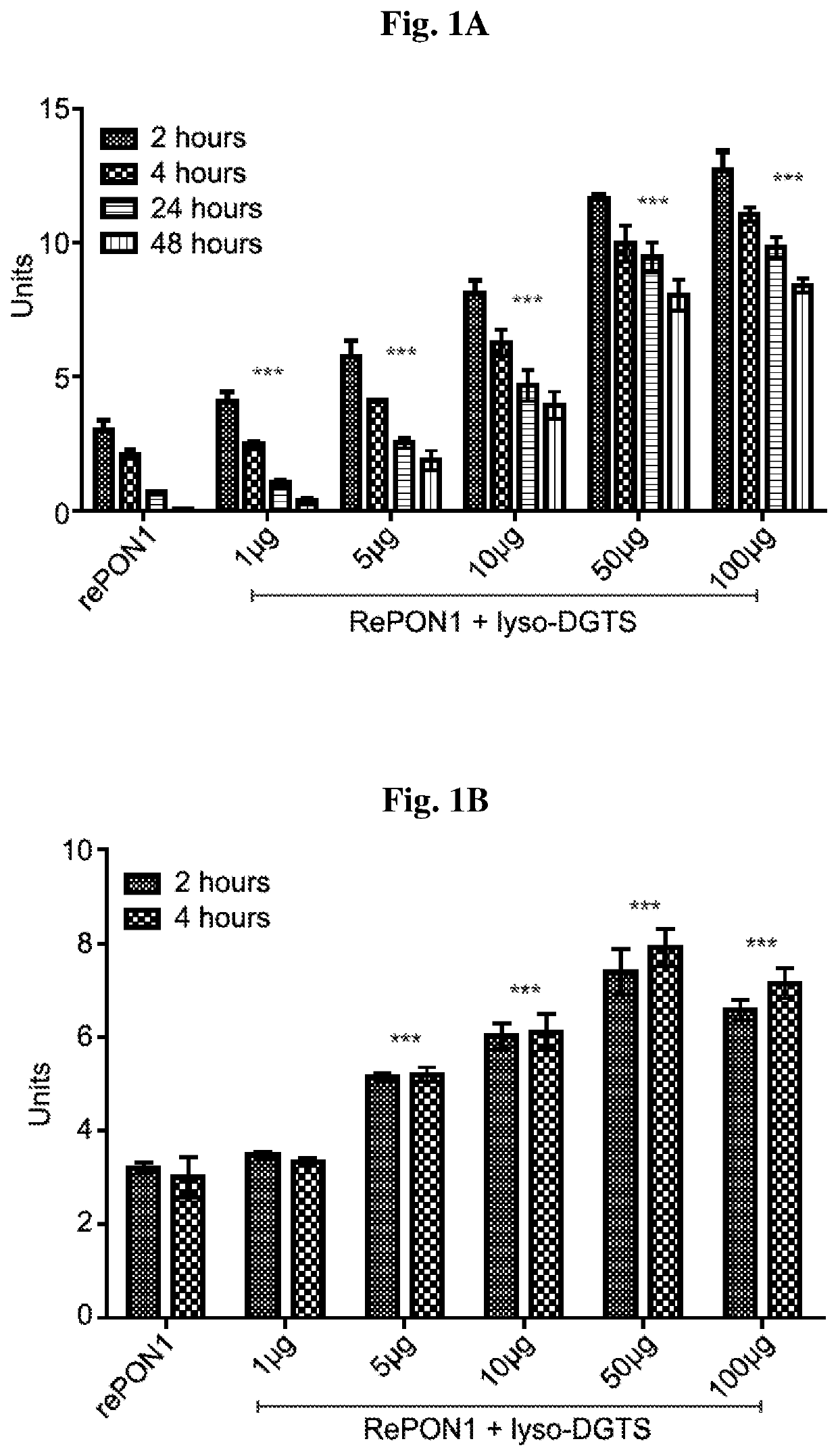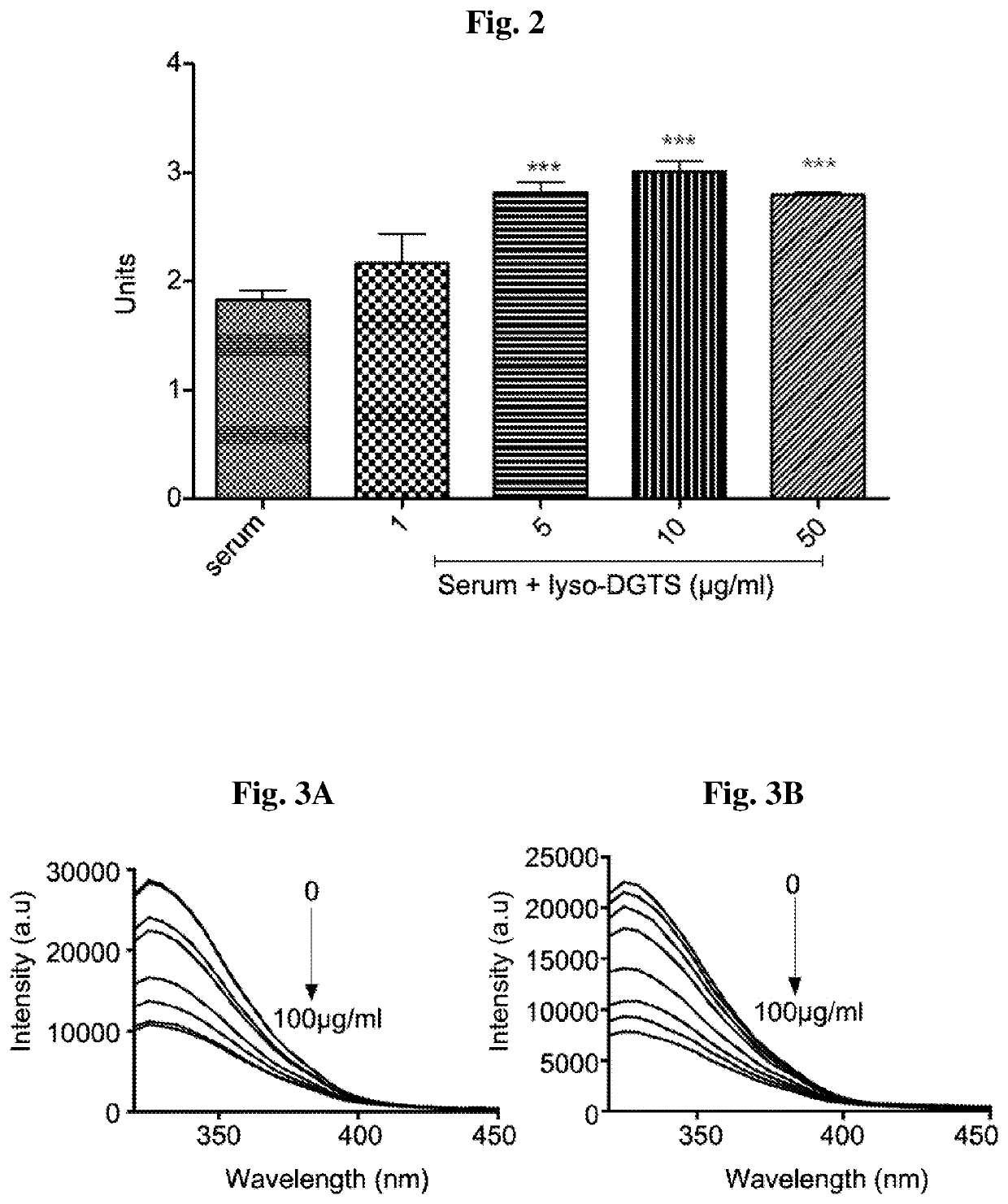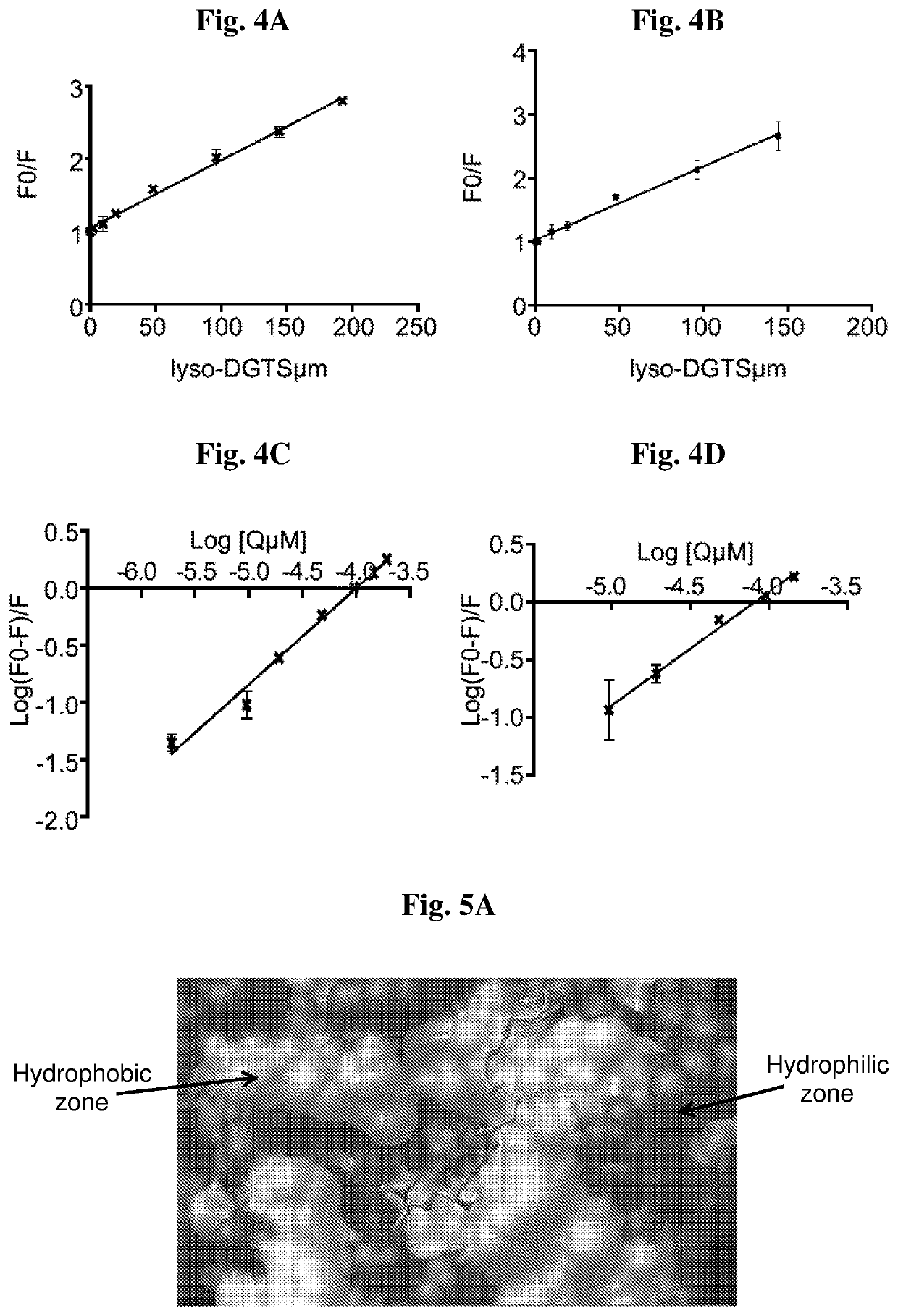Compositions and methods for treating atherosclerotic cardiovascular disease
a cardiovascular disease and composition technology, applied in the field of pharmaceutical compositions and methods for treating atherosclerotic cardiovascular disease, can solve the problems of reducing the risk of cvd by no more than 40%, side effects such as muscle pain and damage, liver problems, and digestive problems,
- Summary
- Abstract
- Description
- Claims
- Application Information
AI Technical Summary
Benefits of technology
Problems solved by technology
Method used
Image
Examples
example 1
Lyso-DGTS on rePON1 Lactonase and Esterase Activities
[0110]The effect of lyso-DGTS on lactonase and arylesterase activities of rePON1 was examined. rePON1 (5 μg / ml in Tris buffer pH=8.4) was incubated with different concentrations of lyso-DGTS for 2, 4, 24, and 48 h at 37° C., and its lactonase and aryesterase activities were measured using dihydrocoumarin and phenyl acetate assays, respectively.
[0111]Incubation of rePON1 with lyso-DGTS increased enzyme lactonase activity in a dose dependent manner. The enzyme activity altered significantly from 3.00 units without lyso-DGTS to 4.05, 5.73, 8.10, 11.61, and 12.7 units at 1, 5, 10, 50, and 100 μg / ml lyso-DGTS, respectively, after 2 h of incubation (FIG. 1A).
[0112]Lactonase activity of rePON1 in buffer solution decreased with time and was abolished after 48 h, whereas the presence of lyso-DGTS stabilized and preserved protein lactonase activity for at least 48 h. Lyso-DGTS at 1, 5, 10, 50, and 100 μg / ml preserved rePON1 lactonase activi...
example 2
t of Lyso-DGTS on Human Serum PON1 Lactonase Activity
[0114]The effect of lyso-DGTS on lactonase activity of human serum PON1 was examined. Human serum was diluted by 20 with PBS buffer and incubated with and without lyso-DGTS at concentrations of 1, 5, 10, and 50 μg / ml for 4 h at 37° C. Lactonase activity of the enzyme was measured using dihydrocoumarin assay. As shown in Example 1, lyso-DGTS increased human serum lactonase activity in a dose dependent manner up to 10 μg / ml, from 1.8 units without lyso-DGTS to 2.16, 2.82, 3.01, and 2.80 units at 1, 5, 10 and 50 μg / ml lyso-DGTS, respectively. The change at 1 μg / ml of lyso-DGTS was not statistically significant (FIG. 2).
example 3
so-DGTS Interaction Using Trp. Fluorescence Quenching Method
[0115]The effect of lyso-DGTS on rePON1 can result from a specific interaction between the lipid and the enzyme which was studied using Trp fluorescence quenching method. FIG. 3 shows the emission spectra of rePON1 in the presence of various concentrations of lyso-DGTS at 25° C. (FIG. 3A) and 37° C. (FIG. 3B) in the 300-450 nm range with an excitation wavelength of 290 nm. Lyso-DGTS quenched the fluorescence of rePON1 in a dose dependent manner at both temperatures.
[0116]Quenching pathways can be described by the Stern-Volmer equation (eq. 1):
F0F=1+Ksv[Q]Eq.1
where F0 and F are the fluorescence intensities in the absence and presence of quencher (lyso-DGTS), respectively, Ksv is the Stern-Volmer quenching constant, and [Q] is the quencher concentration (M).
[0117]The Stern-Volmer curve (F0 / F vs. [Q]) was linear at the tested concentrations of lyso-DGTS at both temperatures (with R2>0.99 and p+4 M−1 and (0.93±0.03)×10+4 M−1 fo...
PUM
| Property | Measurement | Unit |
|---|---|---|
| Substance count | aaaaa | aaaaa |
| Substance count | aaaaa | aaaaa |
| Substance count | aaaaa | aaaaa |
Abstract
Description
Claims
Application Information
 Login to View More
Login to View More - R&D
- Intellectual Property
- Life Sciences
- Materials
- Tech Scout
- Unparalleled Data Quality
- Higher Quality Content
- 60% Fewer Hallucinations
Browse by: Latest US Patents, China's latest patents, Technical Efficacy Thesaurus, Application Domain, Technology Topic, Popular Technical Reports.
© 2025 PatSnap. All rights reserved.Legal|Privacy policy|Modern Slavery Act Transparency Statement|Sitemap|About US| Contact US: help@patsnap.com



